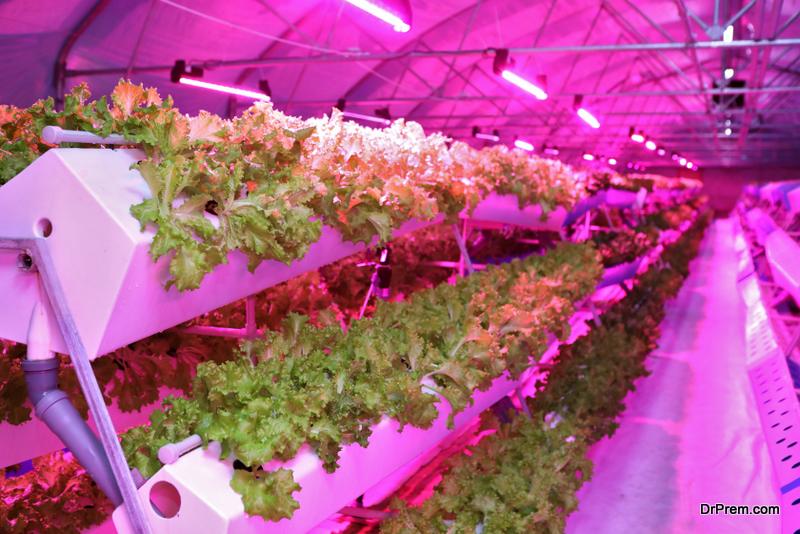Energy efficiency is a crucial aspect of greenhouse operations, as it not only helps reduce operational costs but also contributes to sustainable and environmentally friendly practices. With the increasing focus on resource conservation and climate change mitigation, greenhouse growers are seeking innovative ways to maximize energy efficiency. That’s why we get to see innovative greenhouse designs techniques like the ones incorporated by Exaco Greenhouses. Let us explore those and others strategies and technologies that can be employed to optimize energy usage and promote sustainable greenhouse operations.
1. Passive Solar Design and Insulation
One of the fundamental approaches to energy efficiency in greenhouses is designing and constructing them with passive solar principles in mind. This involves utilizing natural sunlight for heating and optimizing insulation to minimize heat loss. Strategic placement of glazing, thermal curtains, and insulation materials can significantly reduce the need for additional heating during colder periods and ensure better heat retention.
2. Energy-Efficient Heating and Cooling Systems
Heating and cooling are significant energy consumers in greenhouse operations. Implementing energy-efficient heating systems, such as high-efficiency boilers or geothermal heat pumps, can help reduce energy consumption while maintaining optimal temperatures for plant growth. Additionally, using smart temperature and humidity control systems can ensure precise climate management, preventing energy waste.
3. LED Lighting Technology
Artificial lighting is often required in greenhouses to supplement natural sunlight, particularly during darker periods or in regions with limited sunlight. This is especially the case with Large Greenhouses. LED (Light Emitting Diode) technology has emerged as a highly energy-efficient lighting option. Compared to traditional lighting systems, LEDs consume significantly less energy, have longer lifespans, and can be tailored to provide specific light spectrums optimized for plant growth.
4. Automated Control Systems
Integrating advanced automation and control systems into greenhouse operations can lead to improved energy efficiency. These systems can monitor and adjust environmental factors such as temperature, humidity, and lighting levels in real-time. By optimizing these parameters based on plant requirements, energy waste can be minimized, and the overall energy efficiency of the greenhouse can be enhanced.
5. Renewable Energy Integration
Harnessing renewable energy sources within greenhouse operations can contribute to both energy savings and sustainability. Installing solar panels or wind turbines on-site can offset a portion of the energy requirements, reducing reliance on traditional power sources. Additionally, using energy storage systems such as batteries can store excess energy for later use, further optimizing energy consumption.
6. Efficient Water Management
Water and energy usage are closely linked in greenhouse operations. Implementing efficient water management practices, such as drip irrigation systems and water recycling, not only conserves water but also reduces energy demands for pumping and heating water. Monitoring soil moisture levels and using sensors can help ensure precise water application, preventing overwatering and unnecessary energy expenditure.
7. Insulated Curtain Systems
Installing insulated curtain systems in greenhouses provides an additional layer of insulation, reducing heat loss during colder periods and heat gain in warmer months. These curtains can be automated to open and close based on temperature and light conditions, effectively regulating the internal climate and minimizing the need for mechanical heating or cooling.
8. Energy Audits and Monitoring
Regular energy audits and monitoring are essential to identify energy inefficiencies and track energy usage patterns. Conducting energy audits can help pinpoint areas of improvement and prioritize energy-saving measures. Real-time energy monitoring systems can provide valuable insights into energy consumption trends, enabling growers to make informed decisions and optimize their energy usage.
Conclusion
Maximizing energy efficiency in greenhouse operations is crucial for reducing operational costs, conserving resources, and promoting sustainable practices. By making use of Greenhouse Kits and implementing strategies such as passive solar design, energy-efficient heating and cooling systems, LED lighting, automation, renewable energy integration, and efficient water management, greenhouse growers can significantly reduce their energy footprint while ensuring optimal growing conditions. Embracing energy-efficient practices not only benefits the environment but also contributes to the long-term viability and profitability of greenhouse operations.
Article Submitted By Community Writer


